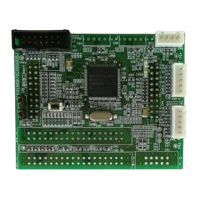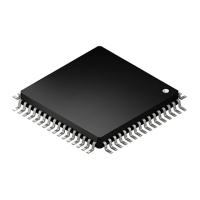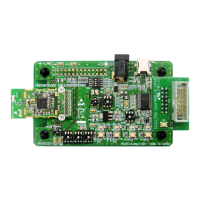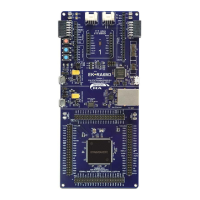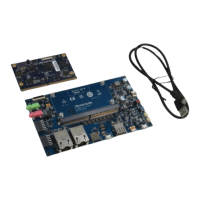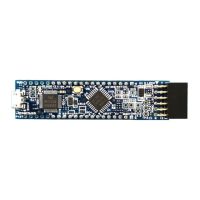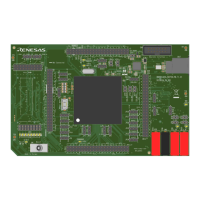R8C/1A Group, R8C/1B Group 16. Clock Synchronous Serial Interface
Rev.1.30 Dec 08, 2006 Page 217 of 315
REJ09B0252-0130
16.3.3.4 Slave Transmit Operation
In slave transmit mode, the slave device outputs the transmit data while the master device outputs the receive
clock and returns an acknowledge signal.
Figures 16.37 and 16.38 show the Operating Timing in Slave Transmit Mode (I
2
C bus Interface Mode).
The transmit procedure and operation in slave transmit mode are as follows.
(1) Set the ICE bit in the ICCR1 register to 1 (transfer operation enabled). Set bits WAIT and MLS in the
ICMR register and bits CKS0 to CKS3 in the ICCR1 register (initial setting). Set bits TRS and MST in
the ICCR1 register to 0 and wait until the slave address matches in slave receive mode.
(2) When the slave address matches at the 1st frame after detecting the start condition, the slave device
outputs the level set by the ACKBT bit in the ICIER register to the SDA pin at the rise of the 9th clock
cycle. At this time, if the 8th bit of data (R/W
) is 1, bits TRS and TDRE in the ICSR register are set to 1,
and the mode is switched to slave transmit mode automatically. Continuous transmission is enabled by
writing transmit data to the ICDRT register every time the TDRE bit is set to 1.
(3) When the TDRE bit in the ICDRT register is set to 1 after writing the last transmit data to the ICDRT
register, wait until the TEND bit in the ICSR register is set to 1 while the TDRE bit is set to 1. When the
TEND bit is set to 1, set the TEND bit to 0.
(4) The SCL signal is released by setting the TRS bit to 0 and performing a dummy read of the ICDRR
register to end the process.
(5) Set the TDRE bit to 0.

